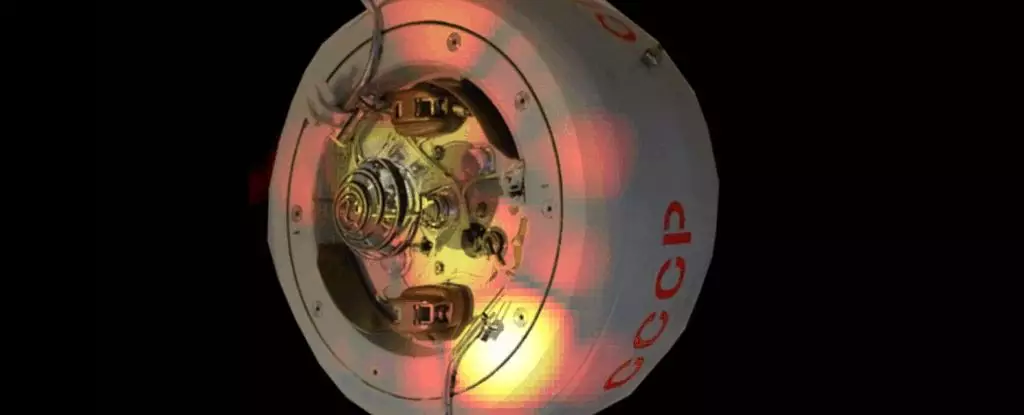In a whimsical twist worthy of a sci-fi novel, Kosmos 482 has emerged from its five-decade metaphorical slumber in space, creating a renewed fascination with space exploration and its inherent challenges. Launched in March 1972, this Soviet probe was originally part of the ambitious Venera program aimed at uncovering the secrets of Venus, Earth’s fiery twin. Yet, despite its lofty aspirations, Kosmos 482 became ensnared in Earth’s gravitational embrace, circling our planet for over 50 years before its spectacular descent on May 10, 2025.
Woven into the history of the Venera mission, Kosmos 482’s trajectory reflects not only the early days of space exploration but also the tenacity of human innovation—the idea that we dared to reach beyond our terrestrial confines, regardless of the fate that awaited our creations. While it may not have achieved its intended goal of exploring Venus, the probe instead captured our imagination with its eventual fate of reentry, emphasizing how far we have come and how much we have yet to learn.
The Hellish Landscape of Venus
It is crucial to understand what set the Venera probes apart from other missions. Venus is an alien world sculpted by extreme weather and daunting atmospheric conditions—an environment more akin to hell than the hospitable Earth we call home. Temperatures soar to a blistering 464 degrees Celsius (867 degrees Fahrenheit), while atmospheric pressure is about 92-fold greater than what we experience at sea level. The clouds above rain sulfuric acid, an absolutely hostile environment for any spacecraft aspiring to touch down on its surface.
The Soviet Union’s engineering prowess produced vessels built not just for exploration but for endurance. The Venera probes, thus, became symbols of human ingenuity battling against the odds. As such, Kosmos 482’s failure to escape Earth’s orbit stands as a cautionary tale that even our moving endeavors in space are fraught with challenges, waiting to be unraveled. Importantly, our aspirations must coexist with respect for the intrinsic dangers posed by space exploration.
A Tumultuous Reentry
On May 10, 2025, Kosmos 482 made its final act by falling back to Earth, the event captured by observant eyes from Fraunhofer Institute for High Frequency Physics and Radar Techniques. The sighting over Germany ignited wonder and nostalgia, compelling global attention toward a long-forgotten piece of our cosmic history. Most probes that don’t reach their targets come crashing down to Earth and become nothing but fleeting memories, but the reentry of Kosmos 482 sparked contemplation about what it means for technology from an era gone by.
The European Space Agency’s commentary highlighted that there were no reports of any significant debris falling to Earth, which, while relieving, underscores the real concerns that linger regarding unaccounted space debris. As satellites and probes continue to circle our planet, how we manage these remnants, identified or anonymous, deserves deeper scrutiny. The situation is a glaring reminder of our unholy relationship with outer space.
The Legacy of Space Debris
While the return of Kosmos 482 was celebrated, it beckons a wider dialogue about the escalating crisis of space debris. The growing fields of detritus orbiting our planet present not only a remarkable challenge for future missions but also an existential question: how do we proceed in an increasingly congested cosmic domain?
The Design for Demise framework, a philosophy that aims to ensure that outgoing spacecraft disintegrate harmlessly upon reentry, has become central to modern space engineering. However, the uneven adoption of these practices indicates a troubling trend in the space community. Even as we make strides toward sustainable practices, we are simultaneously burdening the cosmos with relics of our ambition, making responsible stewardship critical.
To this end, the Kosmos 482 saga, everything from its intended mission to its failed orbital endeavors, serves as a canvas painted with both hubris and humility. It exemplifies how even our failures can inspire reflection about future trajectories in space exploration while still tethering us to Earth’s reality.
Embracing the Unknown
As we commemorate the return of Kosmos 482, we are left with more than just an image and a modest affirmation of our space legacy. The incident reopens discussions on our roles as both pioneers and caretakers of the final frontier. Perhaps the most poignant lesson from the journey of Kosmos 482 is not merely about its fiery descent but about how we embrace the unknown, not afraid to venture into uncertainty as long as we do so with mindfulness and responsibility. The cosmos may be vast, but it is not devoid of consequences dictated by our choices, and Kosmos 482 reminds us of the importance of respecting both our earthly home and the expanses beyond.


Leave a Reply